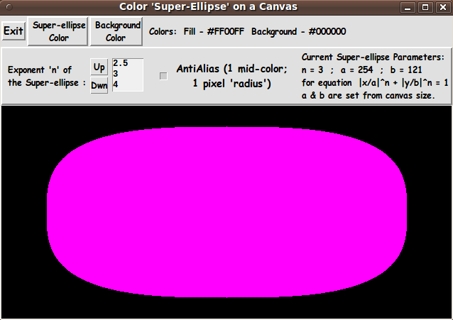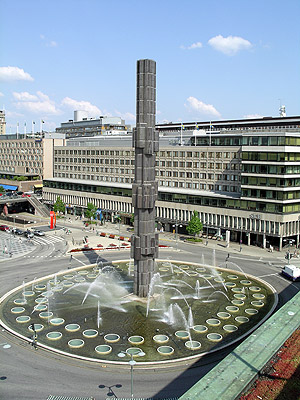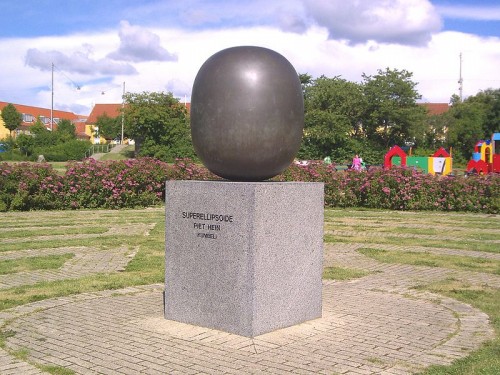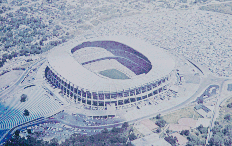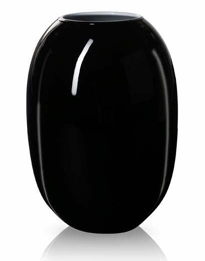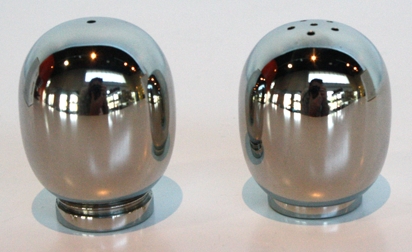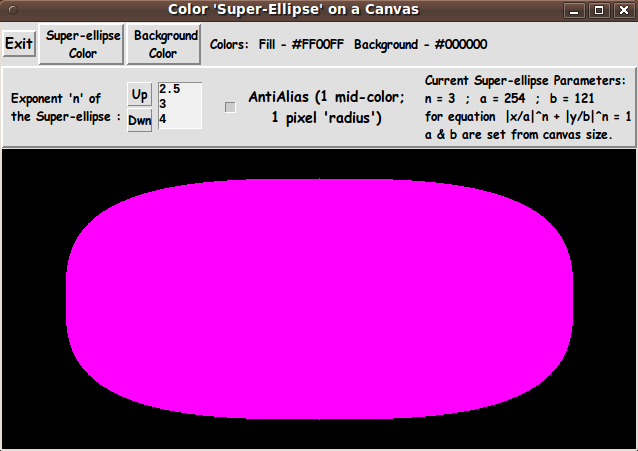|
Experimenting with the GUI
As in all my scripts that use the 'pack' geometry
manager (which is all of my scripts, so far), I provide the four main
pack parameters --- '-side', '-anchor', '-fill', and '-expand'
--- on all the 'pack' commands for the frames and widgets.
I think I have found a good setting of the
'-side', '-anchor', '-fill', and '-expand' parameters on
the 'pack' commands for the various widgets.
In particular ...
The 'canvas' widget expands/contracts appropriately when the window
size is changed --- and button and label widgets stay fixed in size
and relative-location as the window size is changed.
If anyone wants to change the way the GUI configures
itself as the main window size is changed, they can experiment
with the '-side', '-anchor', '-fill', and '-expand' parameters
on the 'pack' commands for the various widgets --- to get the
widget behavior that they want.
---
Additional experimentation: You could change the fonts
used for the various GUI widgets. For example, you could change
'-weight' from 'bold' to 'normal' --- or '-slant' from 'roman' to
'italic'. Or change font families.
Furthermore, there are variables used to set geometry parameters
of widgets --- parameters such as border-widths and padding.
Feel free to experiment with those parameters as well.
Features of the code
There are plenty of comments in the code, to describe
what most of the code-sections are doing.
Since I used a 'create line' technique instead of the 'create image'
technique of 'ulis', I did not use his drawing code.
Instead, I devised a totally new drawing proc that I called 'ReDraw'.
When I finally worked all the bugs out and got a first superellipse
image up, I noticed that there were noticeable 'jaggies' at the
rounded corners of the superellipse (for n=3, at least).
That led me to add an 'AntiAlias' checkbutton to the GUI and to try
to use tiny line segments at the edges of the superellipse (with
'fill' color an average of the superellipse fill color and the
canvas background color).
Adding the (preliminary) anti-alias code to the 'ReDraw' proc makes the code
rather complicated looking.
(The anti-alias code did not improve the edge of the ellipse much
--- and some further experimentation with this technique
did not yield good results.
I will remove that anti-alias code --- and the checkbox on the GUI ---
if I update this code in the future.
Since high-resolution monitors are becoming available,
it may suffice to use this utility on hi-res 'retina display'
monitors --- and thus get fairly alias-free ellipse edges.)
Comments in the Code
The copious comments might help Tcl-Tk coding 'newbies' get started
in making GUI's like this.
Without the comments, the code might look
too cryptic, and potential young Tcler's might be tempted to return
to trying Facebook on their iPhones.
The Tcl-Tk CODE
Here is a link to CODE for the Tk script
'draw_superEllipse_colorFilled_onColorBkgnd.tk'.
Experiments in anti-aliasing with 'create line'
Below is an image that shows the almost unnoticeable effect of
supplying a 'radius=1-pixel' anti-alias technique (with one
color betwen the superellipse color and the background color).
I may return to the code someday to try formulate a radius-2 or radius-3
anti-alias technique --- done with tiny 'create line' segments.
(I tried it. It did not work out as nicely as I had hoped.)
|
